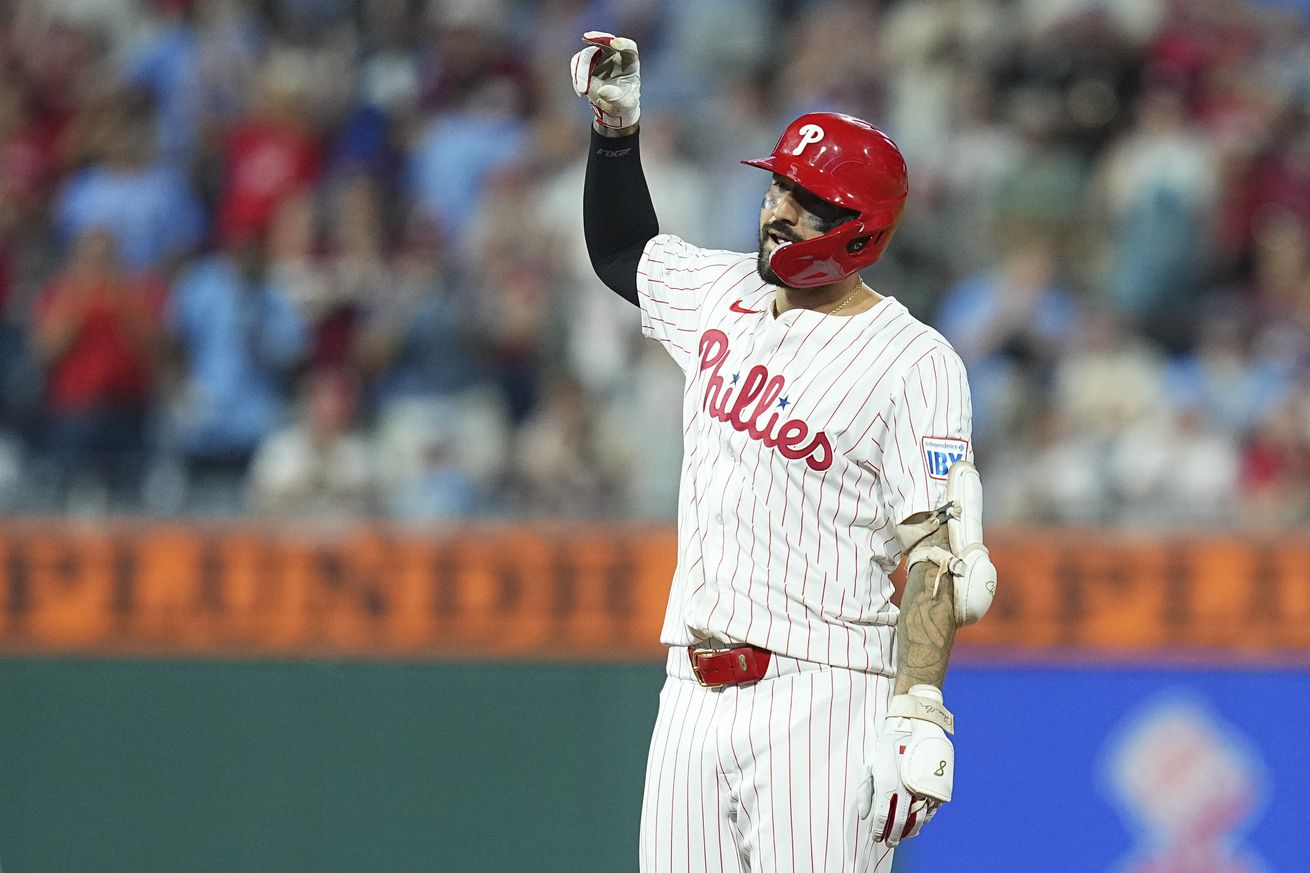
The Phils aren’t hitting as many home runs this year, trading dingers for discipline.
Poor Mick Abel.
Perhaps the Phillies’ rookie right-hander was due for a shell shocking after dancing through the raindrops in his last three outings, and on Saturday night, Francisco Lindor, Brandon Nimmo and Juan Soto pounded him for three consecutive homers in the third inning, giving New York a 4-3 lead they wouldn’t relinquish.
In all, the Mets hit seven bombs on Saturday night and 10 for the three-game series. Virtually every run they scored was via the long ball. They were also outscored 21-14 in getting beaten two of three times by a Phillies offense that hit just three homers in the Phils’ stirring series win over the Mets at Citizens Bank Park.
The Phils aren’t hitting as many home runs this year. Through 78 games they have 83, 16th in baseball. They are on pace for 172, 26 fewer than the 198 they hit a year ago and far less than the 220 they hit in 2023 or the 205 they hit in 2022. On June 23, only one player, Kyle Schwarber (24), is in double figures. Bryce Harper, Trea Turner and Max Kepler are tied for 2nd, with nine each.
Certainly Harper’s injury has affected his totals, but Nick Castellanos has just eight, Alec Bohm seven and J.T. Realmuto only five.
For a team known for its power, balls have just not been clearing the wall.
However, the reduction in homers isn’t just happening in Philadelphia. Sixteen teams have seen a drop in their home runs per game. The league’s isolated power (ISO) of .153 is down from last season’s .156 and way down from ‘23’s .166. Unless you’re a team like the Angels, Cubs, Mariners or Tigers, everyone else’s production is either close to last season’s or significantly down.
Despite the power decrease, the Phillies offense might be better for it.
The Phils are averaging 4.7 runs per game this season. Last year they averaged 4.8, in ‘23 they averaged 4.9 and in ‘22 it was 4.6. But this Phillies’ offense feels less boom-or-bust.
Through 78 games, they have scored two runs or fewer in a game 20 times, or about 25.6% of the time. Last year, they did so 40 times over the full 162 games, 24.6%.
There’s no doubt the Phils would benefit from some additional homers, but their improvement in other areas could be more beneficial once the playoffs roll around.
Their 9.2% walk-rate is the highest it’s been during this four-year run, while their 20.4% strikeout rate is also the best mark for this group. They are second in the league in line-drive-rate, per Baseball Savant, at 25.4%, with a team-wide wRC+ of 107 that is just below last year’s 108. This off-season, manager Rob Thomson wanted the team to use center field and the opposite field more, which they have done, going the other way 25.5% of the time, tied for 6th-most, and up the middle 37.5% of the time, tied for 8th.
The Phillies will never be totally free of some of their bad habits, such as chasing pitches out of the strike zone (29.0%, 9th-highest), and only three teams (Astros, Rays and Rockies) swing at the first pitch as often as the Phillies do. That said, their batting average (.258) and on-base percentage (.332) are the highest they’ve been since 2022.
We’ve seen Phillies teams in recent seasons go on power binges, only to watch the power dry up seemingly overnight. Opposing pitchers would adjust to what the Phils were doing. Hitters would chase and make easy outs. This year, it’s clear an emphasis has been placed on locking in at the plate more, taking what the pitcher gives them, taking the walk, taking the opposite field single, and not getting themselves out.
Power has helped the Phillies advance deep into the playoffs multiple times, but it also has been a lack of fundamentals at the plate that have ultimately doomed them. This year’s group is trying to prevent that scenario from happening again. By having a more conservative approach, the hope is that the lessons of the regular season are transported into a postseason series in which Phillies hitters are grinding out at-bats, making pitchers work harder, putting the pressure on the opposing pitching staff rather than letting them off the hook by chasing as frequently.
It would be great if the Phillies could increase their power production without losing some of the elements they’ve improved upon this year, but it may not be possible. All things being equal, I’m ready to give this year’s offense a try and see what happens.
It may be better.